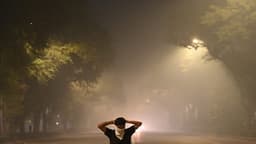Home / Environment / Experts Warn: Cloud Seeding Not a Reliable Solution for Delhi's Air Woes
Experts Warn: Cloud Seeding Not a Reliable Solution for Delhi's Air Woes
31 Oct
Summary
- Cloud seeding deemed ineffective for Delhi's winter pollution
- Lack of moisture and saturation during peak pollution months
- Temporary measure at best, not a permanent solution

According to a recent report, cloud seeding is not a feasible or reliable solution for tackling Delhi's severe winter air pollution. The study, conducted by PhD students from IIT Delhi's Centre for Atmospheric Sciences, found that the meteorological conditions required for successful cloud seeding – adequate moisture, rain-bearing clouds, and favorable thermodynamic structure – are rarely present during the most polluted periods in Delhi.
The report states that there is a "fundamental lack of sufficient moisture and saturation" during the peak pollution months of December and January, when intervention is most needed. Even on potentially promising days, the analysis indicates that the necessary combination of moisture depth, saturation, and atmospheric lift is frequently lacking. As a result, the researchers conclude that cloud seeding cannot be recommended as a primary or reliable strategy for managing Delhi's winter air pollution.
At best, the report suggests, cloud seeding should be viewed as a potential high-cost, emergency short-term measure, contingent on stringent forecasting criteria. Delhi's environment minister has acknowledged that cloud seeding is not a permanent solution, but only a temporary measure to tackle alarmingly high pollution levels.
Advertisement
The study also highlights the complexities arising from Delhi's high-aerosol environment, which can limit the potential benefits of cloud seeding. Heavy natural rainfall has proven highly effective in reducing pollutants, but such conditions are rare during the winter months. Overall, the analysis found only 92 days over the past decade when the moisture and cloud cover were comparable to naturally occurring moderate-to-heavy rainfall, when seeding would have been possible.




